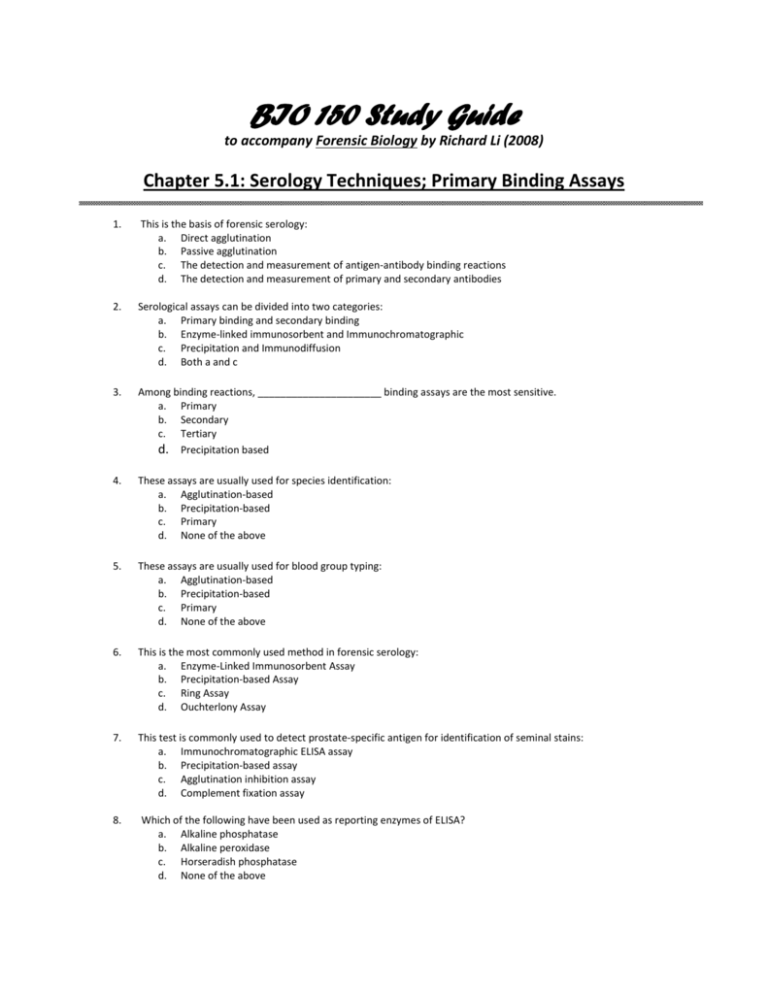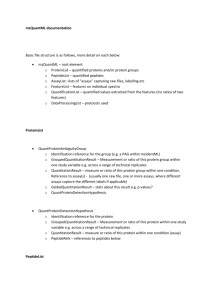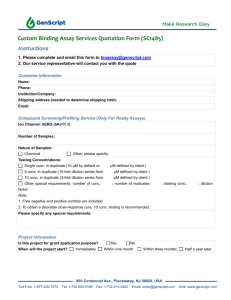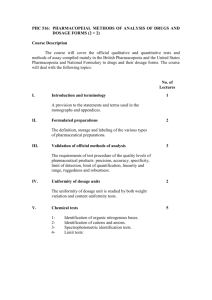BIO 150 Study Guide
advertisement

BIO 150 Study Guide to accompany Forensic Biology by Richard Li (2008) Chapter 5.1: Serology Techniques; Primary Binding Assays 1. This is the basis of forensic serology: a. Direct agglutination b. Passive agglutination c. The detection and measurement of antigen-antibody binding reactions d. The detection and measurement of primary and secondary antibodies 2. Serological assays can be divided into two categories: a. Primary binding and secondary binding b. Enzyme-linked immunosorbent and Immunochromatographic c. Precipitation and Immunodiffusion d. Both a and c 3. Among binding reactions, ______________________ binding assays are the most sensitive. a. Primary b. Secondary c. Tertiary d. Precipitation based 4. These assays are usually used for species identification: a. Agglutination-based b. Precipitation-based c. Primary d. None of the above 5. These assays are usually used for blood group typing: a. Agglutination-based b. Precipitation-based c. Primary d. None of the above 6. This is the most commonly used method in forensic serology: a. Enzyme-Linked Immunosorbent Assay b. Precipitation-based Assay c. Ring Assay d. Ouchterlony Assay 7. This test is commonly used to detect prostate-specific antigen for identification of seminal stains: a. Immunochromatographic ELISA assay b. Precipitation-based assay c. Agglutination inhibition assay d. Complement fixation assay 8. Which of the following have been used as reporting enzymes of ELISA? a. Alkaline phosphatase b. Alkaline peroxidase c. Horseradish phosphatase d. None of the above 9. In an ELISA assay, the intensity of the colorimetric or fluorometric signal can be detected spectrophotometrically and is _____________________ to the amount of bound antigen: a. Equal b. Proportional c. Not proportional d. None of the above 10. This assay is rapid and simple and can be used as a field test at crime scenes for seminal, saliva stains, and species identification: a. Immunochromatographic assay b. Precipitation-based assay c. Secondary binding assay d. Radial immunodiffusion 11. With Immunochromatographic assays, a false-negative may result if a sample consisting of a very ________________ concentration of antigen is analyzed. a. Low b. High c. Neutral d. Monoclonal




